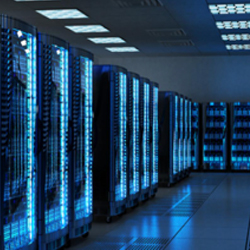Data centers are physical facility that enterprises use to house business critical applications and information. These mission critical facilities require highly resilient infrastructure to ensure uninterrupted critical services that enable business, operations, and systems to function efficiently, effectively and above all continuously. Meltech has experience with all 4 classification tier levels and the infrastructure required for the data center operations and knowledge of the complex security and redundancy requirements for defense projects, network systems managed for utility providers and the resilient life-preservation systems for laboratories and hospitals. Meltech works directly with our client to determine the tier level that will match our clients particular business function by defining the criteria for maintenance, power, cooling and fault capabilities and considering other factors as building codes, regional weather, security and property usage. Vertical scalability is a key component in data center design and construction by allowing our customers the advantage of the ability to increase the capacity of existing hardware or software by adding resources. Meltech partners with our clients to ensure that the data centers provide the reliability, efficiency and security needed. Meltech has completed data centers for some of the most mission critical clients and facilities in the country.
Tier I
A Tier I data center is the basic capacity level with infrastructure to support information technology for an office setting and beyond. The requirements for a Tier I facility include:
- An uninterruptible power supply (UPS) for power sags, outages, and spikes.
- An area for IT systems.
- Dedicated cooling equipment that runs outside office hours.
- An engine generator for power outages.
Tier I protects against disruptions from human error, but not unexpected failure or outage. Redundant equipment includes chillers, pumps, UPS modules, and engine generators. The facility will have to shut down completely for preventive maintenance and repairs, and failure to do so increases the risk of unplanned disruptions and severe consequences from system failure.
Tier II
Tier II facilities cover redundant capacity components for power and cooling that provide better maintenance opportunities and safety against disruptions. These components include:
- Engine generators.
- Energy storage.
- Chillers.
- Cooling units.
- UPS modules.
- Pumps.
- Heat rejection equipment.
- Fuel tanks.
- Fuel cells.
The distribution path of Tier II serves a critical environment, and the components can be removed without shutting it down. Like a Tier I facility, unexpected shutdown of a Tier II data center will affect the system.
Tier III
A Tier III data center is concurrently maintainable with redundant components as a key differentiator, with redundant distribution paths to serve the critical environment. Unlike Tier I and Tier II, these facilities require no shutdowns when equipment needs maintenance or replacement. The components of Tier III are added to Tier II components so that any part can be shut down without impacting IT operation.
Tier IV
A Tier IV data center has several independent and physically isolated systems that act as redundant capacity components and distribution paths. The separation is necessary to prevent an event from compromising both systems. The environment will not be affected by a disruption from planned and unplanned events. However, if the redundant components or distribution paths are shut down for maintenance, the environment may experience a higher risk of disruption if a failure occurs.
Tier IV facilities add fault tolerance to the Tier III topology. When a piece of equipment fails, or there is an interruption in the distribution path, IT operations will not be affected. All of the IT equipment must have a fault-tolerant power design to be compatible. Tier IV data centers also require continuous cooling to make the environment stable.

